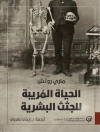In ’How the Other Half Lives: Studies Among the Tenements of New York, ’ Jacob A. Riis unveils the stark realities of life in New York City’s impoverished tenements during the late 19th century. Employing a pioneering blend of journalistic rigor and social documentary, Riis combines vivid storytelling with stark photography to portray the harsh conditions faced by the urban poor. His literary style oscillates between impassioned advocacy and dispassionate observation, capturing both the despair and resilience of those he documents. This work stands as a critical piece of sociological literature, positioned at the intersection of the progressive reform movements and the nascent field of social science, as it sought to illuminate the dire need for social reform in America’s rapidly industrializing cities. Jacob A. Riis, a Danish immigrant who rose from poverty to prominence, draws on his own experiences to inform his work. His background as a police reporter provided him with firsthand insights into the struggles of the disenfranchised, motivating his commitment to advocate for social change. Riis’s empathy for the marginalized and his belief in the potential for reform emerge as central themes, making his voice a compelling beacon for social justice in an era fraught with inequality. This seminal work is essential reading for anyone interested in social justice, urban studies, and American history. Riis’s vivid portrayal of life in the tenements not only educates readers about the plight of the underprivileged but also serves as a clarion call for empathy and reform. ’How the Other Half Lives’ remains relevant today, reminding us of our shared humanity and the enduring importance of advocating for the rights of all citizens.
Om författaren
Jacob August Riis (1849–1914) was a Danish-American social reformer, journalist, and photographer whose work focused on the plight of the urban poor. A pioneer in the use of photography as a means of social reform, Riis immigrated to the United States in 1870 and faced poverty himself before achieving success as a reporter for the New York Tribune. His most renowned work, ’How the Other Half Lives: Studies Among the Tenements of New York’ (1890), exposed the squalid and dangerous living conditions in the slums of New York City through stark photographs and detailed observations, helping to initiate the Progressive Era. Riis’s book combined photojournalism with moralistic storytelling, making it a groundbreaking contribution to the muckraking movement in American journalism. By revealing the human suffering behind urban poverty, Riis’s advocacy helped to spur housing reform and improvements in living conditions for the underprivileged. His vivid descriptions and haunting imagery elicited an empathetic response from the public and influenced fellow reformers, including his friend, President Theodore Roosevelt. Riis’s literary style merged reportage with a passionate call for reform, and his narratives remain a powerful historical window into the lives of the urban poor at the turn of the 20th century.












